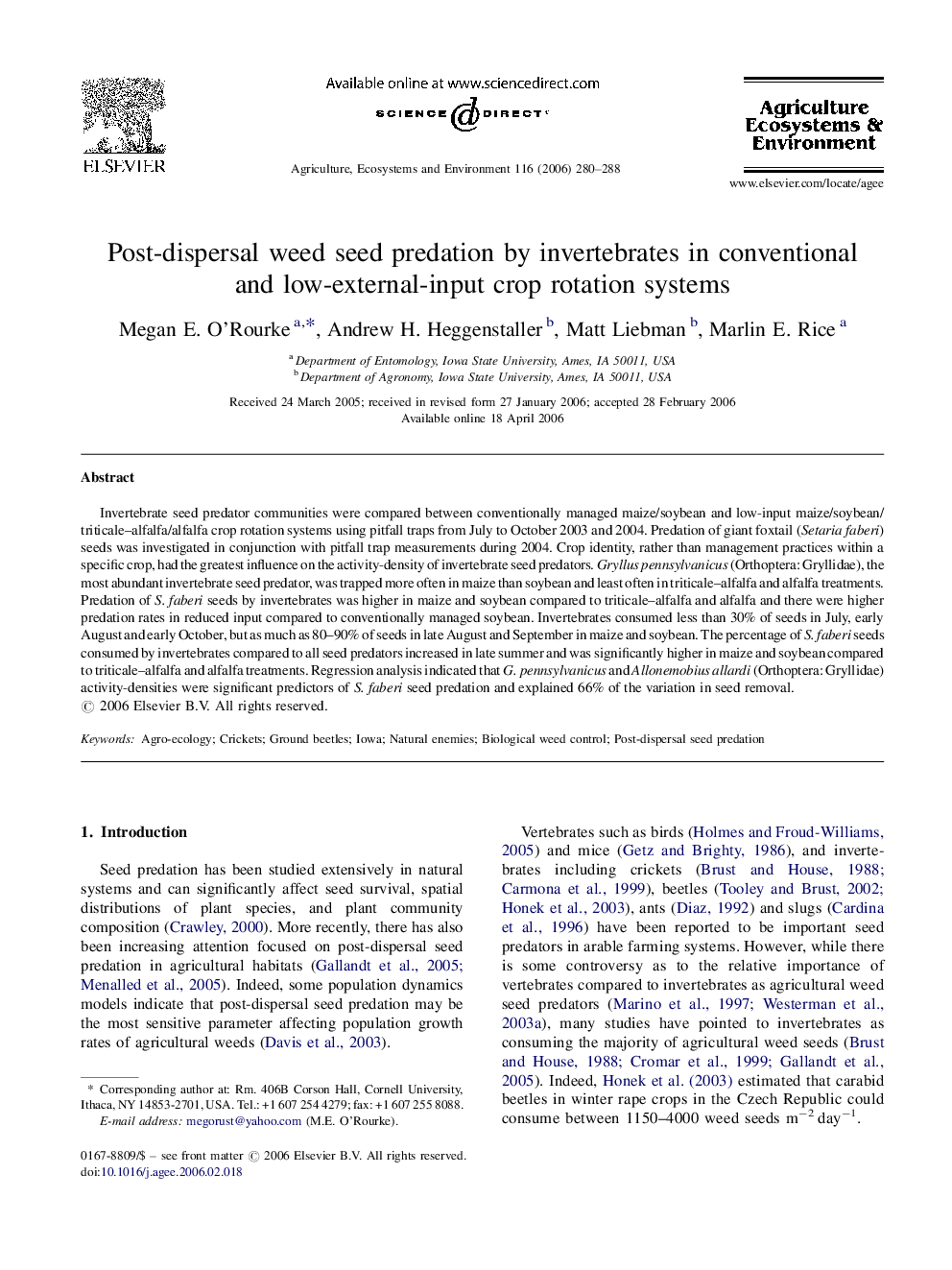| کد مقاله | کد نشریه | سال انتشار | مقاله انگلیسی | نسخه تمام متن |
|---|---|---|---|---|
| 2416098 | 1552146 | 2006 | 9 صفحه PDF | دانلود رایگان |

Invertebrate seed predator communities were compared between conventionally managed maize/soybean and low-input maize/soybean/triticale–alfalfa/alfalfa crop rotation systems using pitfall traps from July to October 2003 and 2004. Predation of giant foxtail (Setaria faberi) seeds was investigated in conjunction with pitfall trap measurements during 2004. Crop identity, rather than management practices within a specific crop, had the greatest influence on the activity-density of invertebrate seed predators. Gryllus pennsylvanicus (Orthoptera: Gryllidae), the most abundant invertebrate seed predator, was trapped more often in maize than soybean and least often in triticale–alfalfa and alfalfa treatments. Predation of S. faberi seeds by invertebrates was higher in maize and soybean compared to triticale–alfalfa and alfalfa and there were higher predation rates in reduced input compared to conventionally managed soybean. Invertebrates consumed less than 30% of seeds in July, early August and early October, but as much as 80–90% of seeds in late August and September in maize and soybean. The percentage of S. faberi seeds consumed by invertebrates compared to all seed predators increased in late summer and was significantly higher in maize and soybean compared to triticale–alfalfa and alfalfa treatments. Regression analysis indicated that G. pennsylvanicus and Allonemobius allardi (Orthoptera: Gryllidae) activity-densities were significant predictors of S. faberi seed predation and explained 66% of the variation in seed removal.
Journal: Agriculture, Ecosystems & Environment - Volume 116, Issues 3–4, September 2006, Pages 280–288